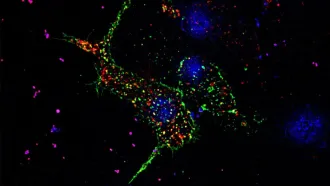
Researchers from Indian Institute of Technology Indore have demonstrated a new, ultrasensitive glucose sensor, made of nanopetals of Nickel Oxide (NiO). The new device has shown robustness and very high sensitivity, while utilizing very little power.
According to World Health Organization report, India has been leading the list of highest number of diabetics in the world. The country which had around 30 million diabetics in 2000 is expected double that number by the year 2030. Although genetic disorders are a known cause for the disability, diabetes can also be caused due to elevated blood glucose levels, arising from lifestyle choices we make. An early detection of such rising glucose levels then, could help doctors prescribe the right treatment at the onset of diabetes.
Conventional glucose sensors use chemicals to detect enzymes like glucose oxidase to detect the concentration of glucose. Called enzymatic glucose sensors, such sensors often suffer from limitations like short life span, effects of environmental conditions, like temperature, pH and the toxicity of the chemical used. To overcome such limitations, non-enzymatic glucose sensors have been designed, which uses the oxidation of glucose to detect its concentration.
For the new device, the researchers used NiO which shows high sensitivity to glucose, while remaining inert to other acids and enzymes in the body. The device is made of NiO nanopetals—petal shaped sheets of NiO of nanometer (a billionth of a meter) size, grown on a Fluorine doped Tin Oxide (FTO) coated glass substrate. The FTO coating makes the glass electrically conductive, allowing the nanopetals which are grown on its surface to communicate with devices, once it senses glucose.
The researchers used nickel nitrate and potassium persulfate mixture in ammonium solution to grow the nanostructures of NiO. The nanostructures were grown on the FTO coated glass substrate, by heating the above solution continuously, for more than five hours, at 150 degree Celsius. The process allowed them to grow well aligned and uniform coating of nanopetals on the substrate. The nanostructures were confirmed using X-ray diffraction (XRD), electron and atomic force microscopies, energy dispersive X-ray (EDX), and X-ray photospectroscopy (XPS).
The new device showed very high sensitivity in measuring glucose, with detection limit as low as 1 micro Mole and fast response time of less than a second. The device was also found to be inert to ascorbic acid (AA), uric acid (UA) and dopamine acid (DA), which are commonly known to damage enzymatic sensors.
According to the researchers “the glucose sensor electrode possesses good anti-interference ability, stability, repeatability & reproducibility making it a perfect non-enzymatic glucose sensor”






